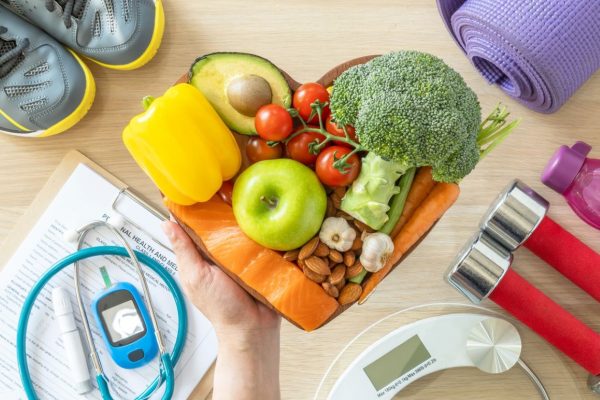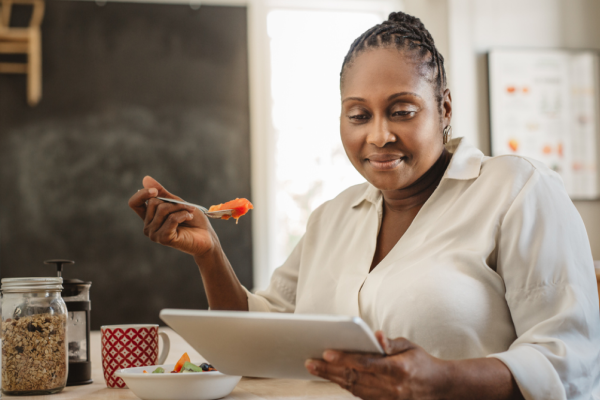Aunt Flo. The Rag. The Crimson Wave. Whatever you call it, menstruation is a fact for life for most women between 12 and 50 years of age. Unfortunately, as if bleeding weren’t enough, periods are often accompanied by a variety of uncomfortable symptoms, such as cramps, bloating and moodiness—84% of women in this study reported having experienced pain during their period, with over 50% requiring the use of pain medication. During your period, exercising may well be the last thing on your mind. However, there have been documented benefits attributed to exercising during your time of the month.
- Reduces pain
Menstrual cramps are caused by the release of prostaglandins, which trigger mild contractions of the uterus. This reduces blood flow to the lining of the uterus, causing it to break down and be expelled from the body. Exercise helps counter this process by increasing blood flow to the uterus, and by triggering the release of endorphins into your bloodstream. Endorphins are the body’s own home-made morphine, and increase tolerance to pain—you can see why they would be handy to have around while dealing with menstrual cramps!
- Improves mood
While we’re on the subject of endorphins, they can help to alleviate some of the moodiness associated with a period. You know what I’m talking about—irrational anger, overreaction, crying for no reason. Menstruation releases a heady cocktail of hormones into your body, and these hormones can have catastrophic effects on your mood. However, this 2013 study suggests that regular exercise can help to significantly decrease moodiness and other PMS symptoms. Meditative exercises such as yoga can also help to soothe the soul and work through negative feelings during this time of the month.
- Lightens, shortens and regulates period
That’s right, there’s a way to shorten and lighten your period without hormonal birth control. Exercise is an important part of keeping in peak physical and sexual health. It can reduce your menstrual flow and the duration of your periods, as well as helping them to become more regular. The effect of exercise on stress also affects your cycle—simply put, stress messes with your hormones, and exercise has been shown to reduce stress.
- Keeps you on track with your fitness goals
Whether you’re training to run a marathon, do a headstand or reach a new personal record in the squat rack, persistence is everything when trying to reach a fitness goal. Taking one week out of every month to camp out on the couch and watch rom-coms with a pint of ice cream may seem tempting, but it definitely won’t help you soar to new heights fitness-wise. Besides, it doesn’t make sense to put aside a beloved pastime because of a minor physical disruption. Just take care not to push yourself too hard—it would be wiser to take part in a gentle or modified version of your usual exercise routine if you are feeling under the weather.
- Relieves bloating and water retention
These unpleasant symptoms are not uncommon amongst women before and during their periods. Water retention is related to dehydration and the imbalance of the hormones estrogen and progesterone, whereas bloating has more to do with intestinal disruptions and the increased hunger some women experience at the start of their period. Fortunately, exercise can assist in banishing both ailments. When you exercise, your heart rate increases, which improves your circulation and reduces water retention. Exercise can also help reduce that pesky bloating by assisting the passage of gas through the digestive tract.
- There’s a new solution to the problem of leakage
One of the barriers to exercising during your period is the risk of leakage. Traditional disposable products such as pads and tampons can leak or chafe while exercising, leading to discomfort and embarrassment for the user.
Fortunately, a solution to the problem has been discovered—menstrual cups. Made of medical grade silicone, menstrual cups provide an exercise experience free from leakage and odor. There are plenty of menstrual cups for beginners, and they are hugely cost-effective in comparison to disposable sanitary products. In 2012, Jezebel estimated that the average woman spends around $120 every year on pads and tampons. In comparison, the iconic Diva Cup will only set you back about $25 for the whole year (depending on where you live) and only needs to be replaced (depending on the brand) from 5 to 10 years. If you haven’t heard anything until now or haven’t got the courage to use one, don’t worry, there are plenty of menstrual cups for beginners
Most women use between 240 and 260 tampons per year, depending on the duration and heaviness of their cycle. These tampons can take around 6 months to fully decompose, and the plastic lining in sanitary napkins can take up to 500 years! However, there are a variety of options for recycling menstrual cups made of medical grade silicone. These can include your local recycling plant, any local hospitals, and companies such as Come as You Are Co-operative, who can recycle the cups into sex toys.
So there you have it—six reasons not to skip your work out when your monthly visitor comes knocking. Remember to be gentle with yourself, and don’t push too hard, but don’t let your uterus become a barrier to being the best athlete you can be.





